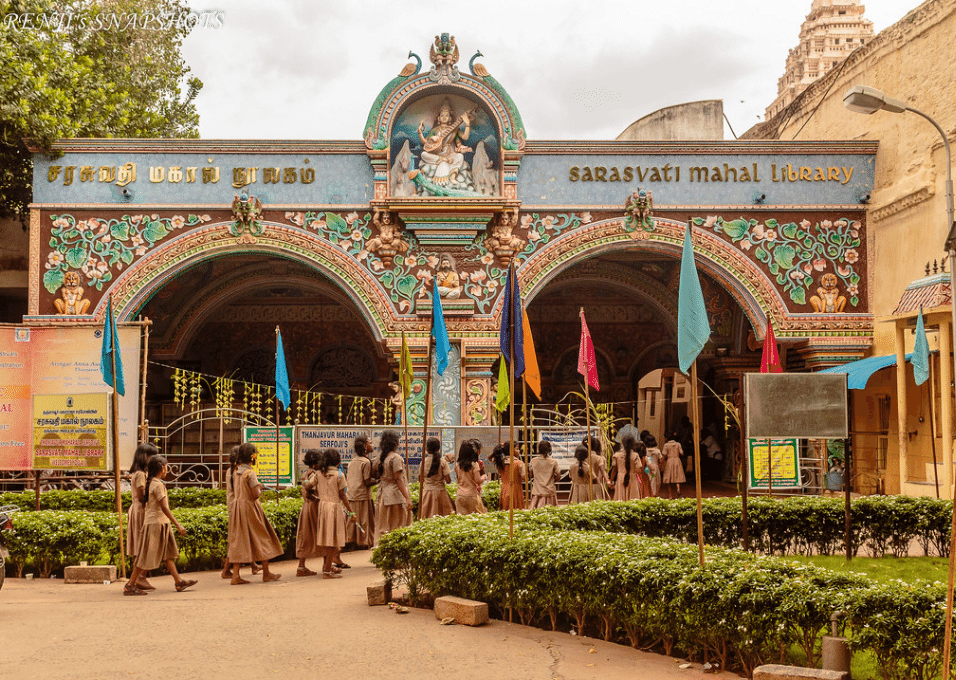What if I told you that India still has a 500-year-old library that continues to guard the wisdom of the ancients? While Nalanda and Takshashila were reduced to ashes, one library in Thanjavur still stands tall — a living reminder of India’s unbroken pursuit of knowledge. This is the story of the Sarasvati Mahal Library, one of the oldest surviving libraries in Asia.
The Birth of a Legacy
Founded in the 16th century by the Nayak kings and later nurtured by the Maratha rulers, Sarasvati Mahal Library became a sanctuary of India’s intellectual tradition. Unlike monuments of stone, this library holds monuments of thought — 49,000 palm-leaf and paper manuscripts written in Sanskrit, Tamil, Telugu, and Marathi.
What Lies Inside?
Each manuscript is a window into India’s soul:
- Vedas and Upanishads whispering eternal truths
- Ayurveda and astrology guiding health and destiny
- Music, dance, and drama capturing the rhythm of culture
- History, literature, and architecture preserving our civilizational journey
A Survivor Through Time
When invaders destroyed Nalanda and other ancient universities, much of India’s wisdom vanished. But Sarasvati Mahal endured. Hidden in the heart of Thanjavur’s palace, it became a silent guardian of India’s cultural memory — proof that knowledge, when preserved, becomes timeless.
Why It Matters Today
In today’s fast-scroll world, this library reminds us of something powerful: civilizations do not fade if they safeguard their knowledge. Sarasvati Mahal is not just a library — it is India’s pride, a bridge between our glorious past and an inspired future.
Question for You
If you had the chance to step into Sarasvati Mahal Library, which type of manuscript would you want to explore first — spiritual texts, medicine, or art?

